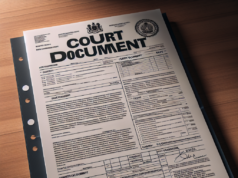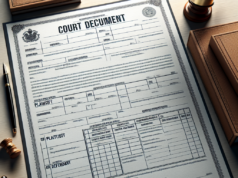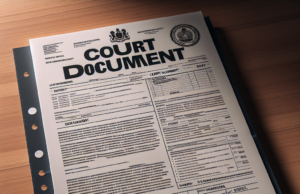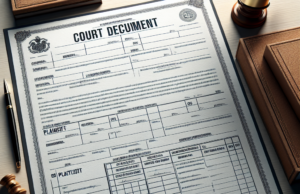
INDIANA DIVORCE LAWS & REGULATIONS UPDATE 2023
A DECADE OF TRANSFORMATION: AN OVERVIEW OF INDIANA DIVORCE LAWS AND REGULATIONS TIMELINE (2013-2023)
In the past decade, Indiana’s divorce laws and regulations have experienced significant changes, reflecting the state’s commitment to modernizing its legal framework and ensuring fairness, transparency, and the well-being of families involved in divorce proceedings. From property division to child custody, these amendments underscore Indiana’s dedication to addressing the evolving needs of contemporary families. This article presents a concise overview of key updates in Indiana’s divorce laws and regulations from 2013 to 2023, categorized by the year of implementation.
2013: No-Fault Divorce Simplification
– Simplified the process of obtaining a no-fault divorce by eliminating the requirement for a legal separation period.
2014: Parenting Time Considerations
– Introduction of guidelines for parenting time arrangements to ensure consistent involvement of both parents.
2015: Child Support Guidelines Update
– Revision of child support guidelines to reflect changing economic realities and ensure appropriate financial support for children.
2016: Property Division Clarity
– Clearer guidelines for the division of marital property, addressing the equitable distribution of assets and debts.
2017: Mediation Promotion
– Encouragement of mediation as an alternative dispute resolution method for resolving divorce-related conflicts.
2018: Alimony Factors Defined
– Establishment of specific factors for courts to consider when determining alimony awards.
2019: Shared Custody Emphasis
– Focus on shared custody arrangements to promote meaningful relationships between children and both parents.
2020: Electronic Filing Adoption
– Implementation of electronic filing options to streamline the divorce filing process.
2021: Collaborative Divorce Acknowledgment
– Acknowledgment and promotion of collaborative divorce as a cooperative and amicable way to end a marriage.
2022: Military Divorce Considerations
– Inclusion of provisions addressing unique aspects of military divorces, such as deployment and benefits.
2023: Retirement Asset Division Guidelines
– Establishment of guidelines for the division of retirement assets acquired during the marriage.
Indiana’s commitment to updating its divorce laws underscores the state’s proactive approach to meeting the changing needs of families while ensuring fairness and the well-being of all parties involved. As Indiana continues to adapt its legal landscape, it remains crucial for policymakers, stakeholders, and the public to engage in informed discussions that uphold the principles of justice and equity, supporting families as they navigate the complex process of divorce.
Residency and Filing Needs
There are some aspects of divorce in Indiana that you need to know about before proceeding with anything. First off, if one spouse intends to file, that spouse will then be called the ‘Petitioner.’ The other spouse will be called the ‘Respondent’ in the matter.
Once divorce is eminent, there’s one requirement in the state of Indiana that needs to be met before filing.
• Either party must be an Indiana resident for at least six months prior to filing for divorce.
• Either party must also be a resident of the county where divorce has been filed for at least three months time.
Reasons for Divorce in Indiana
There are many reasons for it, but for the most part the court separates all reasons into two categories:
• No-Fault Divorce
• Fault Divorce
“No-Fault” basically can mean one thing –
1) There Must be an “Irretrievable Breakdown” of the Marriage
“Fault” divorce in Indiana, however, is an entirely different situation.
Grounds for that divorce can include one or more of these as determined by a court of law:
• Felony Conviction
• Impotence During Marriage
• Incurable Insanity for at Least Two Years During Marriage
Both “No-Fault” and “Fault” divorce have separate stipulations that can affect custody, child support, and spousal support.
The Definition of “Legal Separation” Versus “Divorce”
Of course, both parties to a marriage may elect to “legally separate” instead of proceed through a divorce. What’s the difference?
A legal separation is essentially both parties agreeing to go their separate ways without dissolving the marriage. There are many reasons for doing this, one being the need to retain certain benefits within the marriage agreement that would otherwise be discontinued upon a divorce. For instance: medical insurance.
Typically, though, a legal separation does lead to a divorce agreement, in which case all grounds for divorce move forward, as well as the marriage then becomes dissolved in a court of law along with any other benefits and assets, questions of child custody, parenting time, and support (if children are in fact present).
The Primary Documents For a Divorce in Indiana
Ten or twenty documents may be included in the proceeding, not limited to these:
• Appearance
• Summons
• Settlement Agreement
• Decree of Dissolution of Marriage
• Declaration Under the Uniform Child Custody Jurisdiction Act
• Petition for Dissolution of Marriage
• And Final Dissolution of Marriage Decree
Divorce in Indiana : Property Distribution
When it comes to divorce in Indiana, it’s important to know that the state favors “equitable distribution.” This simply means that all assets are divided equally among both parties regardless of either party’s wishes. Sometimes, though, this doesn’t necessarily mean that “equitable” will be equal. Rather, the word fair is more the proper term to be used when dealing with property distribution.
Typically the court will encourage both the Petitioner and Respondent to come to an agreement about property distribution. If there’s no agreement, the court will decide.
In addition, the court may also award the wife her former or maiden name upon agreement of the divorce.
Divorce in Indiana : On the Subject of Spousal Support
This issue may only be relevant if the court or both parties see a need for either party to support the other financially for any reason either on a temporary or permanent basis.
Divorce in Indiana : Dealing With Child Custody
Generally speaking, parents can come to an agreement on this matter regarding divorce in Indiana in several ways:
• Joint Physical Custody
• Sole Physical Custody
• Joint Legal Custody
• Sole Physical Custody
“Joint Physical Custody” is essentially sharing custody of the child(ren) in terms of where the child(ren) may live: either in mother’s residence, or father’s residence. Child(ren) retains two addresses. Both parties are equally responsible for the well-being of the child(ren) as well as for the education of the child(ren).
“Sole Physical Custody” is when one party retains physical custody of child(ren) and the other party retains “Visitation Rights.”
“Joint Legal Custody” is when both parents share the right to make important decisions in the life/lives of the child(ren), which may include legal name, lifestyle, needs, etc. etc.
“Sole Legal Custody” is when only one parent retains the right to make important decisions in the life/lives of the child(ren).
Divorce in Indiana : How to Determine Child Support If Necessary
Typically, the non-custodial parent pays child support. The Income Shares Model is employed to determine the amount. By combining W2’s and other worksheets, an amount is determined that would best suit the needs of the child(ren) without unfavorable financial problems on the non-custodial party.
Generally speaking, both parties may agree to an amount. But in the event that a Petitioner and Respondent don’t, the court may utilize state support guidelines to arrive to a decision as to how much support is necessary for the child(ren).



























